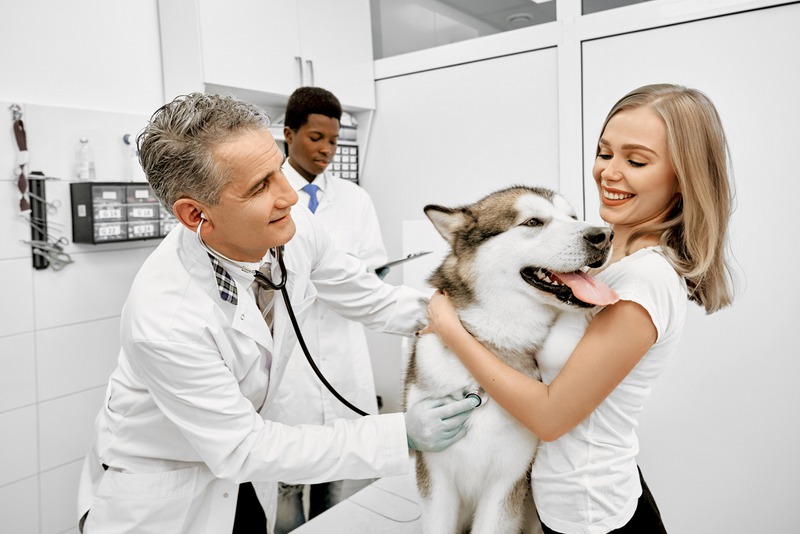If you’re snuggled up with your pet and sense something’s off, you quickly head to the vet, worried. The word “surgery” pops up at the vet’s office, making you anxious. But how does the vet decide this, especially on the first visit? We’re about to explore that process. Stay with me as we break down how vets make these decisions. This journey might give you peace of mind and help you prepare for what comes next.
Assessing the Need for Surgery
Before getting into any nitty-gritty, let’s cover the basics. When your pet has a problem that may require surgical intervention, your vet will conduct a thorough examination and possibly recommend diagnostic tests. It’s much like putting together a complex jigsaw puzzle without the box picture; vets use their expertise to piece together signs, symptoms, and findings to see the bigger picture: your pet’s health.
1. Initial Examination
It all starts with a comprehensive physical check-up. Your vet will look over your pet from whiskers to tail. They’ll consider various factors such as:
-
Visible abnormalities or wounds
-
Signs of pain or discomfort
-
Changes in behavior or appetite
-
Abnormal lumps or swelling
-
Difficulty in movement or lameness
With these observations, your vet can get a preliminary understanding of what’s going on.
2. Diagnostic Tools
The next step might involve diagnostics if the physical exam suggests something is amiss. Here’s a look at some standard tools vets use:
-
Blood Tests: To check for infections, organ function, and other conditions.
-
X-rays: To view bones, particular foreign objects, or issues within the chest and abdomen.
-
Ultrasounds: To view soft tissues, organs, and masses not easily seen on X-rays.
-
Biopsies: Where a small tissue sample is taken for examination under a microscope.
-
CT scans/MRI: These provide a more detailed look at the body’s structures, often informing decisions on complex surgeries.
These tests give your vet the crucial data needed to decide whether surgery is necessary.
3. Understanding Your Pet’s Specific Situation
Every animal is unique, which means there’s no one-size-fits-all approach. Certain conditions, like a clearly broken bone or an obstructed digestive tract, are surgical candidates right off the bat. In contrast, other situations might require more observation or even a referral to a specialist.
If you’re looking for skilled care for your pet’s surgical needs, you’ll find dedicated veterinarians in Little Rock, AR, prepared to go the extra mile to ensure the best outcomes for your furry companions.
When Surgery is the Answer
Some telltale signs and conditions lead a vet to consider surgery as a viable treatment option. Here are several cases where this drastic step might be needed:
Clear-Cut Cases for Surgery
There are instances where surgery is the best, if not the only, option. For example:
-
Trauma that requires repair, such as severe wounds or broken bones.
-
Swallowed objects causing intestinal blockages.
-
Certain types of cancerous growths that need removal.
-
Severe dental issues could lead to systemic health problems if not addressed.
Complex Decisions
However, not all surgical decisions are straightforward. Veterinarians often face more complex cases where the pros and cons must be weighed carefully. Chronic conditions, the pet’s age, the potential for recovery, and the quality of life post-surgery are all vital considerations.
Non-Surgical Alternatives
It’s sometimes about something other than surgery. Sometimes, a vet might suggest exploring other pathways to wellness, such as medication, lifestyle changes, or less invasive procedures.
Moreover, before making any major decisions, pet owners must read more information about the importance of vaccination in pets. Staying informed about preventive care helps avoid surgeries related to diseases that can be mitigated with proper vaccination.
Preparing for Possible Surgery
If the collective findings point toward surgery, here’s what you can expect. Your vet will discuss the specific procedure, its potential risks and benefits, and pre-operative care. They might also suggest additional tests to ensure your pet’s surgery readiness and determine the best anesthesia regimen.
Consent and Understanding
Let’s be real; it’s a stressful time. But remember, informed consent is your right. You should feel comfortable with the information provided and make decisions based on your pet’s best interests.
The Role of the Surgery Team
When the decision for surgery is made, rest assured that your pet is in good hands. Skilled surgical teams, like those performing cat & dog surgery in Little Rock, will prepare to take every precaution to ensure your pet’s safety and recovery.
Here’s a brief rundown of what the surgical team does:
-
Thoroughly sterilizes the operating area to prevent infection
-
Uses advanced monitoring equipment to track vital signs
-
Manages anesthesia to ensure your pet is pain-free during the procedure
-
Provides post-operative care and clear instructions for at-home recovery
Remember that surgery isn’t where the journey ends. Recovery and post-operative care are just as crucial as the procedure itself.
Final Thoughts
Choosing surgery for your pet is a significant decision that can be life-saving. Your vet will support you throughout the process, from pre-surgery to follow-up care. Wishing your furry friend a smooth surgery and a quick recovery. Always ask questions and express concerns; you and your vet are partners in your pet’s health. Remember, understanding your pet’s health starts with that first vet visit. You know your pet best, and your vet is the medical expert. Together, you’ll ensure your pet has a long, happy, and healthy life.

